Religion
Satanic Cult Awareness
Official US Government Publication. Read it here.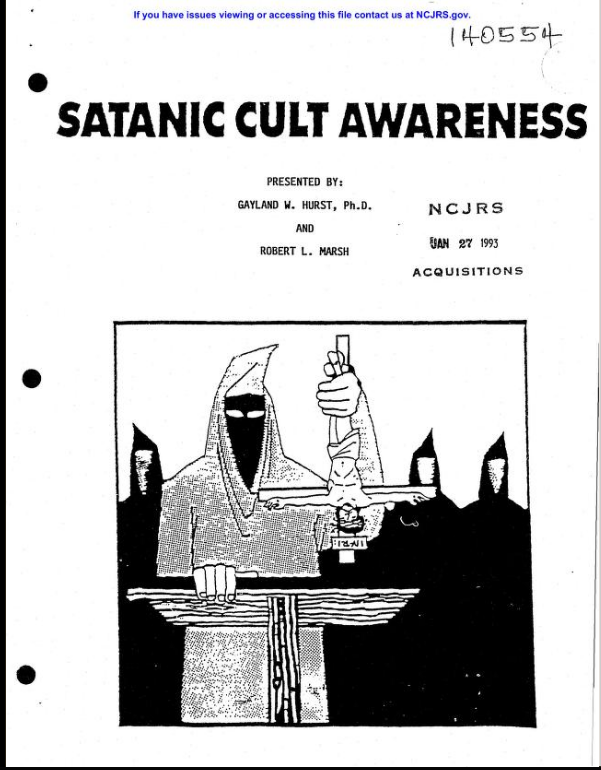
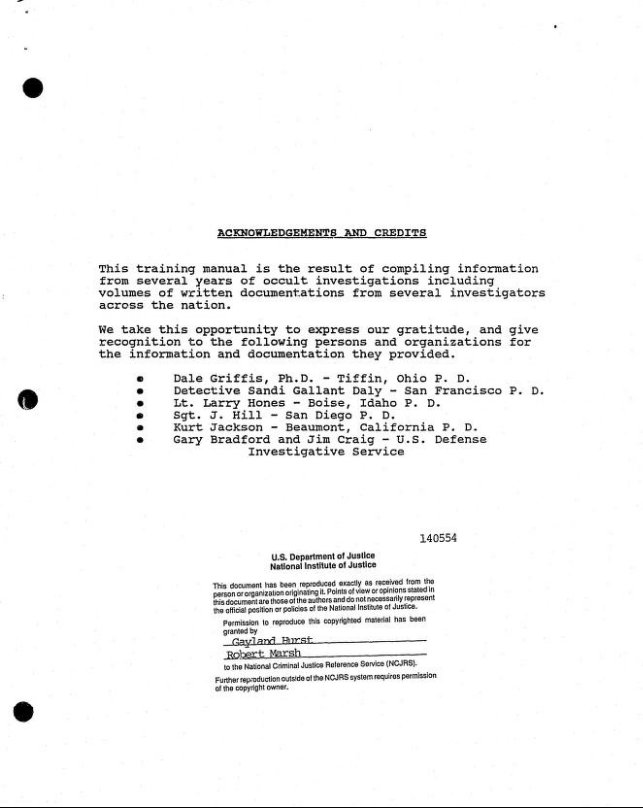
Posted By: Paul - Sat Apr 02, 2022 -
Comments (1)
Category: Cult Figures and Artifacts, Government, PSA’s, Religion, Supernatural, Occult, Paranormal, Studies, Reports, White Papers, Investigations
How the Virgin Mary got pregnant
According to ancient Christian tradition, it was through her ear. Details from JohnSanidopoulos.com: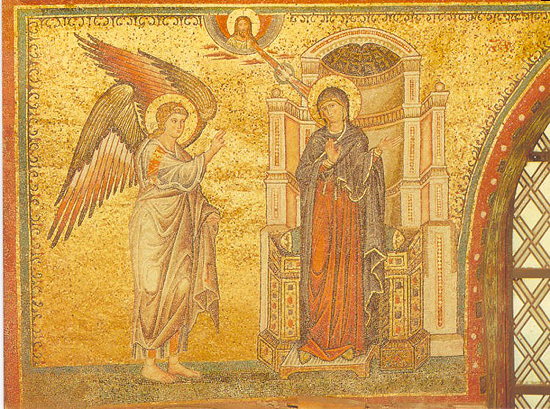
Posted By: Alex - Wed Mar 30, 2022 -
Comments (4)
Category: Religion, Pregnancy
The Ice Cream Virgin
January 2000: a melted ice cream stain in front of a soda machine in Houston attracted pilgrims when people noticed that the stain kinda/sorta looked like the Virgin of Guadalupe.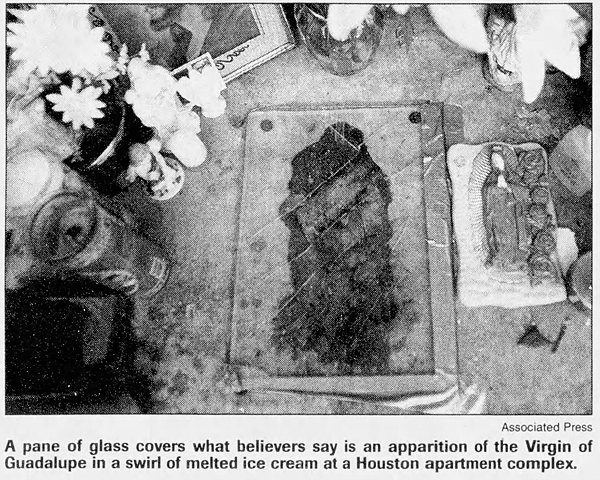
Corpus Christi Caller-Times - Jan 14, 2000
Some analysis from an article by J. Rhett Rushing ("Homemade Religion: Miraculous Images of Jesus and the Virgin Mary in South Texas") that appeared in 2001: A Texas Folklore Odyssey.
Unsettling to the Catholic clergy and other, more formal religious folks, these widespread images of religious figures are not only immediately accepted by some of the local believers, but in fact, are quite expected.. . .
At a southside Houston apartment complex in February of 2000, I witnessed a "folk mass" of nine women praying, taking a version of communion, and supplicating themselves to an image of the Virgin that miraculously appeared in a melting ice cream spill next to the laundry room's Coke machine. Later interviews confirmed that the group had no leader and certainly no church sanction for their activities, but as Maria B. explained, "When the Virgin comes to see you, you don't wait for the priest."
Maria's remark seems to be the mantra for South Texas Hispanic Catholics. Historically underserved by the Catholic Church, religion for many was learned and practice at the altarcitas and grutas of the family.
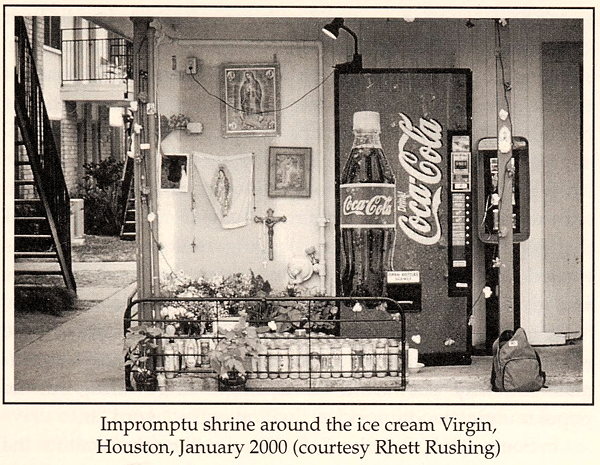
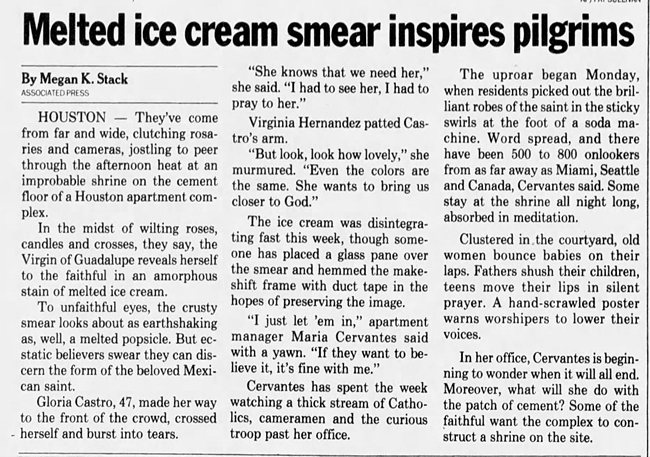
San Francisco Examiner - Jan 14, 2000
Posted By: Alex - Sat Mar 19, 2022 -
Comments (1)
Category: Religion, 2000s, Pareidolia
Desert Christ Park
Their homepage.
Posted By: Paul - Wed Mar 09, 2022 -
Comments (0)
Category: Eccentrics, Fairs, Amusement Parks, and Resorts, Religion, 1950s
Robbie the Pulpit Robot
More info: CyberneticZoo.com


Pittsburgh Press - Aug 23, 1973

Posted By: Alex - Wed Mar 02, 2022 -
Comments (1)
Category: Religion, AI, Robots and Other Automatons, 1970s
Hanging ‘Satan Claus’
December 1980: The members of the Truth Tabernacle Church in Burlington, NC tried Santa Claus. The charges included "child abuse by urging parents to buy liquor instead of clothing," "lying and saying he is Saint Nicholas," "causing churches to practice Baal religion unknowingly," and "causing ministers to lie about Christ's birthday."They found Santa — or 'Satan Claus' as they called him — guilty on all charges and hanged him in effigy.
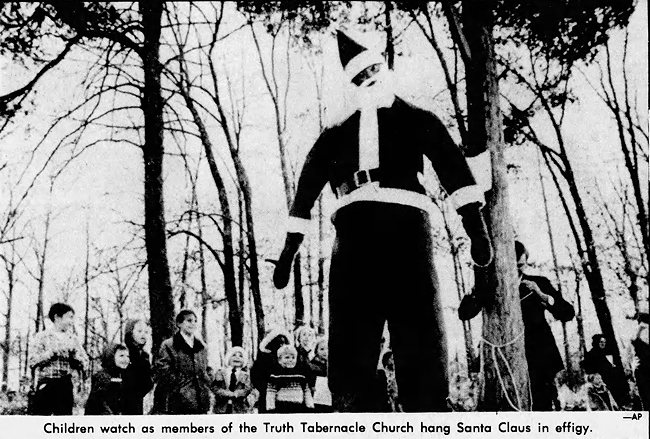
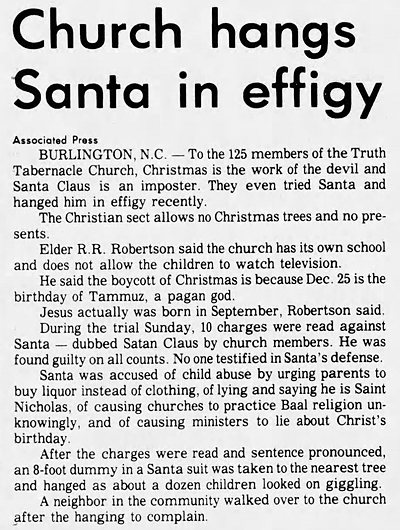
Owensboro Messenger-Inquirer - Dec 19, 1980
Posted By: Alex - Thu Dec 23, 2021 -
Comments (7)
Category: Religion, 1980s, Christmas
The Valley of the Dawn
Read a recent article on the sect here.
The Wikipedia page.

Posted By: Paul - Tue Nov 16, 2021 -
Comments (1)
Category: Aliens, Eccentrics, Religion, Space Travel, South America
Arabic Proverbs
I intend to salt my conversation thoroughly with the proverbs in this book.Read it here.
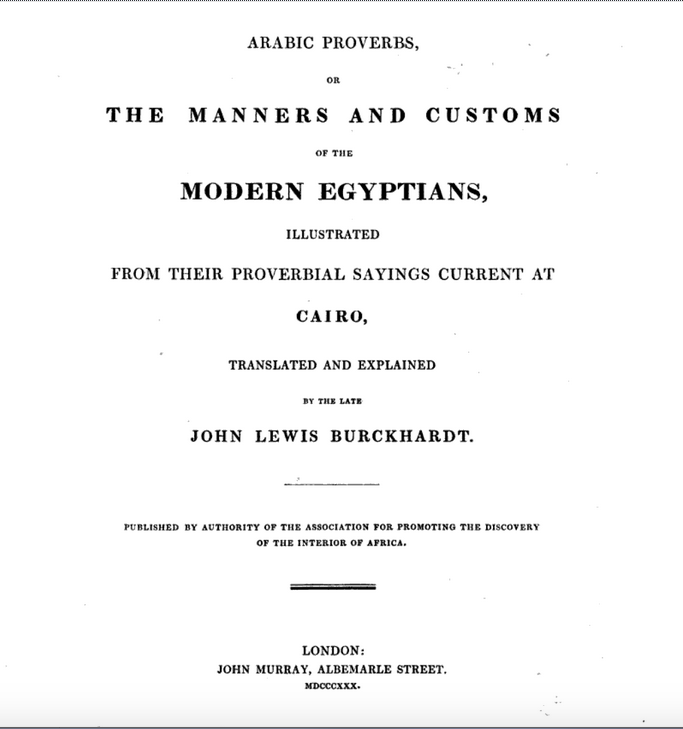
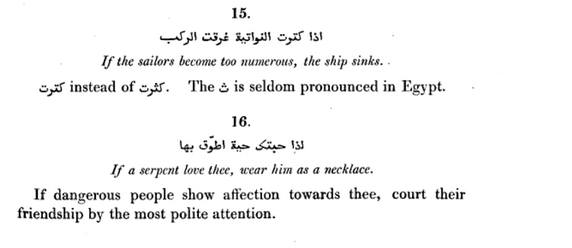
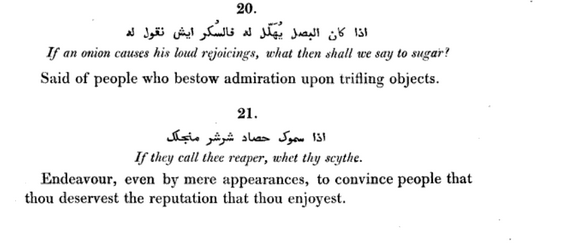
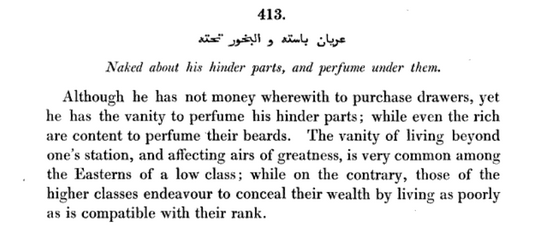
Posted By: Paul - Sun Nov 14, 2021 -
Comments (0)
Category: Religion, Proverbs, Maxims, Sayings, Folk Wisdom and Quotations, Middle East, Nineteenth Century
St. Rumwold—the youngest saint
Due to the vagaries of medieval spelling, Rumwold is also known as Rumald, Rumbold, Grumbald, Rumbald, etc. The story goes that Rumwold was born in 662 and only lived for three days. But during that brief time he demonstrated the ability to speak and recited the Lord's Prayer. So, after his death, he was made a saint.
image source: .johnsanidopoulos.com
While a three-day-old saint is, on its own, odd enough, my favorite part of his story involves the picture of him that later hung in Boxley Abbey in Kent. It was used as a test of a woman's chastity. Those who were chaste would easily be able to lift the picture. But if a woman was not chaste, the picture would mysteriously become so heavy that she wouldn't be able to lift it.
The secret, unknown by those trying to lift the picture, was that it could be held in place (or not) by a wooden rod concealed behind it.
The story of the unliftable portrait is told by Sidney Heath in Pilgrim Life in the Middle Ages (1911):
His image at Boxley is said to have been small, and of a weight so light that a child could lift it, but that it could at times become so heavy that it could not be moved by persons of great strength.
Thomas Fuller, the quaint old divine, tells us that "the moving hereof was made the conditions of women's chastity. Such who paid the priest well might easily remove it, whilst others might tug at it to no purpose. For this was the contrivance of the cheat — that it was fastened with a pin of wood by an invisible stander behind. Now, when such offered to take it who had been bountiful to the priest before, they bare it away with ease, which was impossible for their hands to remove who had been close-fisted in their confessions. Thus it moved more laughter than devotion, and many chaste virgins and wives went away with blushing faces, leaving (without cause), the suspicion of their wantonness in the eyes of the beholders; whilst others came off with more credit (because with more coin), though with less chastity."
Posted By: Alex - Mon Nov 01, 2021 -
Comments (2)
Category: Babies, Hoaxes and Imposters and Imitators, Religion, Medieval Era
High Spirits
A unique defense.Source: Daily News (New York, New York) 08 Mar 1943, Mon Page 219
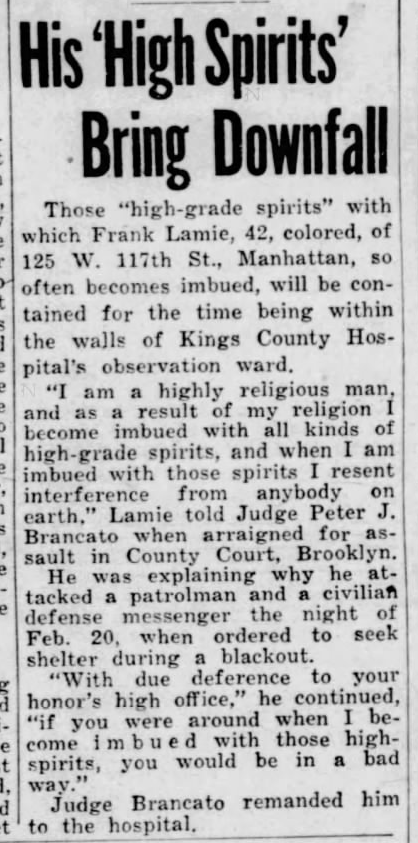
Posted By: Paul - Sun Oct 17, 2021 -
Comments (0)
Category: Eccentrics, Police and Other Law Enforcement, Religion, Mental Health and Insanity

| Who We Are |
|---|
| Alex Boese Alex is the creator and curator of the Museum of Hoaxes. He's also the author of various weird, non-fiction, science-themed books such as Elephants on Acid and Psychedelic Apes. Paul Di Filippo Paul has been paid to put weird ideas into fictional form for over thirty years, in his career as a noted science fiction writer. He has recently begun blogging on many curious topics with three fellow writers at The Inferior 4+1. Contact Us |




